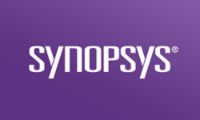Cloud native EDA tools & pre-optimized hardware platforms
The HDMI forum officially released HDMI 2.1 in November, 2017. Gamers around the world saw a new ray of hope in the new features announced in the latest specification – “Enhanced refresh rate features ensure an added level of smooth and seamless motion and transitions for gaming, movies and video” (Ref: HDMI Forum releases v2.1 of the HDMI specification). These features include Variable Refresh Rate (VRR), Quick Mode Switching (QMS), and Quick Frame Transport (QMT).
In our previous blog on HDMI 2.1- Channeling the GenX Audio Video Experience, we listed Game Mode VRR among one of the elite features of HDMI 2.1. QMS and QFT are the marketing names for the HDMI 2.1 features, ‘VRR with M_CONST’ and ‘Fast Vactive’ (FVA). Before getting into the details of each feature in this blog, let’s first understand the different problems gamers may experience.
Screen Tearing
Most of us have probably observed a tear on the screen like the one shown in the picture below. It’s highly undesirable, but do you know what causes it?

Displaying images on the monitor from the video card involves many steps; one might even suggest it involves two main steps (i.e. From preparation of the frame to rendering the frame). The monitor works at a fixed refresh rate, the frequency at which the image on a monitor is refreshed, most often 60Hz. Ideally, for a refresh rate of 60Hz a new image is to be drawn by the video card, every 16.67ms. However, if the image is not prepared completely part of the new frame with fragments of the previous frame is displayed. This appears as a ‘tear’ in the image. The figure below, a graphical representation of drawing of frames by the GPU and scanning of frames by the panel, clearly shows a tear occurs when the new frame is updated while the old frame is still being scanned.

Lag and Screen Stuttering
If the video card processes the frame too slowly and the frame is not fully rendered at the 16.67ms mark, the monitor will automatically redraw the previous frame. To draw the new frame, the video card must wait for another 16.67ms to render the new image. This duplicate frame leads to ‘lag’ and ‘screen stuttering’. The figure below shows how tear is avoided. Monitor scans the new frame when the previous frame has been scanned. However at 32ms, since the new frame is not yet ‘drawn’, the previous frame is scanned and displayed again.

Now, let’s find out how HDMI 2.1 is equipped to eliminate these problems.
Variable Refresh Rate
VRR is the general term for a refresh rate that can continuously vary on the fly. It is a mechanism which allows the video card and the monitor to work together to find the most optimum refresh rate. Thus, VRR allows a picture to be sent over the link the moment that the Source finishes preparing it. VRR reduces or eliminates lag, stutter, and frame tearing for a better gaming experience.
Quick Mode Switching (or Variable Refresh Rate with M_Const)
‘VRR with M_Const’ allows switching the video format to a format with the same resolution but a lower refresh rate than the current nominal one without disrupting the audio/video presentation. This allows the monitor to support smooth transitions between the base refresh rate and a constant rate used for media. Thus, QMS is mainly applied to movies and video to get rid of the delay that can result in an untimely blank screen.
Quick Frame Transport (or Fast Vactive)
‘FVA’ allows the video card to increase the character rate in order to transmit the data for each frame as fast as possible. This is a bonus for fast paced games. Thus QFT aims at reducing the lag in gaming and real-time interactive virtual reality.
Armed to fight lag, stutter, and torn frames, which are the enemies of good gaming and fine movie viewing experiences, the enhanced refresh rate features appear to be the crowning glory of the HDMI 2.1 specification. 草榴社区 VIP for HDMI which supports Variable Refresh Rate and Fast Vactive, is the one-stop solution for the verification of the latest enhanced refresh rates.
Read about
To learn more about 草榴社区 Display and other VIPs, please visit .












